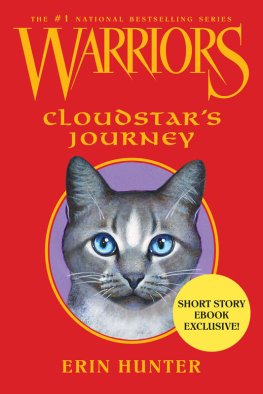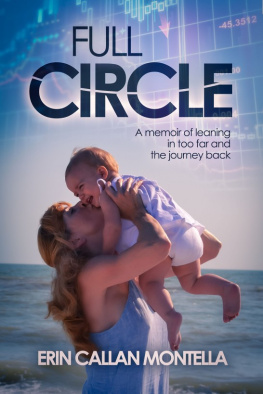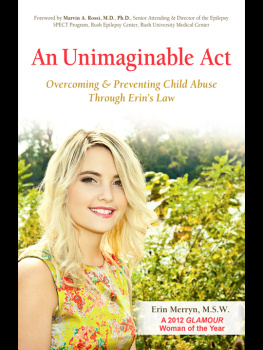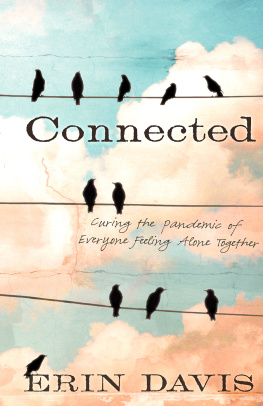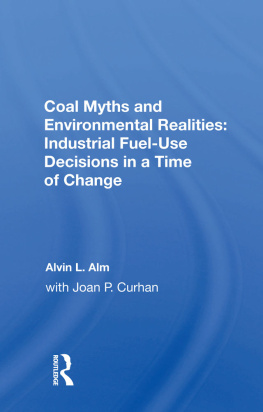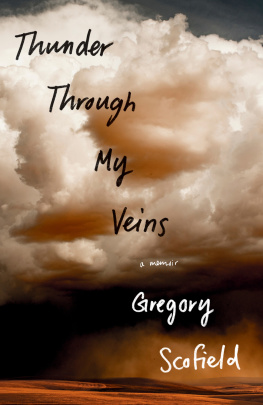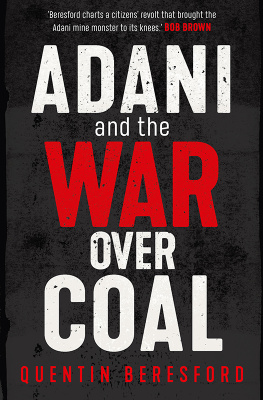2012 by the University Press of Colorado
Published by Utah State University Press
An imprint of University Press of Colorado
5589 Arapahoe Avenue, Suite 206C
Boulder, Colorado 80303
The University Press of Colorado is a proud member of
| The Association of American University Presses. |
The University Press of Colorado is a cooperative publishing enterprise supported, in part, by Adams State College, Colorado State University, Fort Lewis College, Metropolitan State College of Denver, Regis University, University of Colorado, University of Northern Colorado, Utah State University, and Western State College of Colorado.
All rights reserved
Manufactured in the United States of America
Printed on recycled, acid-free paper
Cover design by Jeanne Goldberg
ISBN: 978-0-87421-863-3 (cloth)
ISBN: 978-0-87421-865-7 (e-book)
Library of Congress Cataloging-in-Publication Data
Thomas, Erin Ann.
Coal in our veins : a personal journey / Erin Ann Thomas.
p. cm.
Includes bibliographical references.
ISBN 978-0-87421-863-3 (cloth : acid-free paper) ISBN 978-0-87421-865-7 (e-book)
1. Thomas, Erin AnnFamily. 2. Coal minersUtahBiography. 3. Coal minersWalesBiography. 4. Welsh AmericansUtahBiography. 5. Thomas, Erin AnnTravel. 6. Coal mines and miningUtahHistory. 7. Coal mines and miningWalesHistory. 8. CoalEnvironmental aspectsUnited States. 9. CoalSocial aspectsUnited States. I. Title.
HD8039.M62U669417 2012
622.3340922dc23
2012012249
A Miners Lamp
A carbide lamp, no longer used as a functional object, sits on my bookshelf in the living room next to other mementos, relics, and souvenirs from around the world. These objects remind me of the experiences I had in the cities where I purchased them, but displayed in my living room, they bring more attention to me than they do to the location of their origin. For my living room visitors, the carbide miners lamp is a visual affirmation of my physical and literary journey into coal. Sometime between the years 1900 and 1930, a miner used this lamp to illuminate his way through the tunnels of a mine.
Carbide lamps were developed after candles and oil lamps, each an attempt to provide light for mining by a more efficient and safer means. My carbide lamp is about four inches tall and cylindricalapproximately two inches in diameter. It has two chambers: one that can be filled from the top with water and a lower chamber for carbide. This lamp is designed so that water from the upper chamber drips down into the lower, creating acetylene gas when it comes into contact with the whitish carbon salt. These two chambers screw together like a light bulb into a socket.
When I unscrew my carbide lamp it squeaks slightly; in the chamber below a few crumbs of carbide remainashes left by somebody who passed on long ago. After placing the carbide in the lamp and screwing it shut, this miner would have opened a small spout in the middle of a metal disk-reflector in the front. This released the acetylene, which he would have ignited by sparking flint. He would then have turned the spout until the flame was about an inch tall, the reflector casting the light of the flame forward ten feet in a thick beam. This model, made by one of the most popular suppliers of the day, Justrite, has a rubber grip at the bottom of the brass body. The miner might have held it in his hand or hooked it to the top of his cloth hat. But the crumbs of carbide left in my lamp give no indication of the particulars of this miners life or how the lamp made its way from his possession as much as a hundred years ago to an online antique store where my father purchased it for my twenty-ninth birthday.
In the United States, miners no longer used this sort of lamp by the time my grandpa, Robert Thomas, began mining coal alongside his father in the 1930s. He would have been called Bobby then and used a battery-powered light that provided less of a fire hazard in a gaseous mine. Bobby is my primary connection to coal, and growing up I was always conscious that my surname had been passed down through generations of strong-backed and rough-handed men. I have always been proud of this fact, preferring my ancestry of Welsh coal miners over a lineage of kings.
Despite this, the coal-mining stories my grandparents and parents told me were like relics or souvenirs. Through them, the memories of my grandfather, his parents, and those before them were preserved, but ultimately I regarded these stories as something that made me more interesting, rather than linking me to the reality of my ancestors lives or even the reality of my grandfathers life. During the years I knew him, he was a respected educator in the world I lived in. As a former academic vice president at Brigham Young University (BYU) and the founder of its Honors Program, Bob Thomas was still quoted when I started school there in 1996. This, rather than coal, was the tradition that he passed down to my father, Ryan, who is also a college administrator. My grandfathers choice to leave mining redefined what it meant to be a Thomas. And as a Thomas and my fathers daughter, I have also found my place in education, carving out my niche in teaching ESL and English, my occupation now in the Washington, D.C. metropolitan area. Until very recently, Bobby, a teenager in overalls with a blackened countenance, felt as distant as he was different.
This changed early in 2006 when I was walking through OHare Airport during a layover on my flight to D.C., returning from Christmas vacation. Hours before, I had been dropped off at the Salt Lake airport by my parents, who, after hugging me and placing my luggage on the sidewalk, traveled back to central Utah. They headed through the valleys and up a canyon to their home in Price, a former mining community of ten thousand residents, where my father was the president of the College of Eastern Utah. When he accepted the job five years previously, leaving his position at Utah Valley State College, I joked with my friends that he and my mother were moving south so he could become a coal miner. Price is near Castle Gate, where my grandfather grew up and my great-grandfather mined. This connection to our family history heavily influenced my fathers decision to take the position.
My journey to D.C. symbolically leaped in tandem with my parents journey back to Carbon County and its abandoned coal mines when the voice of a television reporter reached me over the noise of the terminal. I peered up at a screen rigged over the departure gate ahead. The camera shifted from a newsroom to groups of people in T-shirts and jeans with strained looks on their faces in front of the backdrop of a little white church: thirteen miners had been trapped in a West Virginian coal mine.







